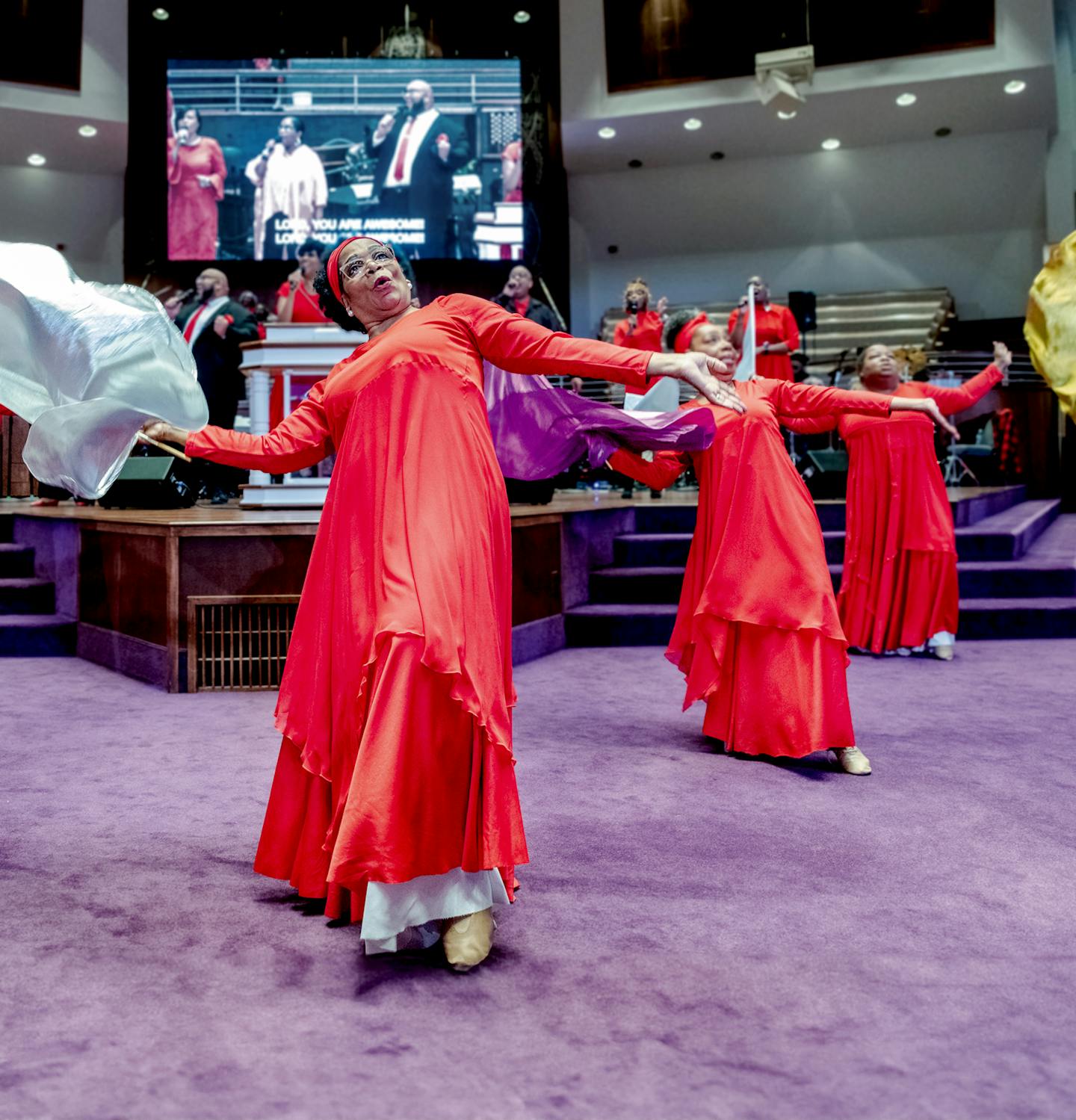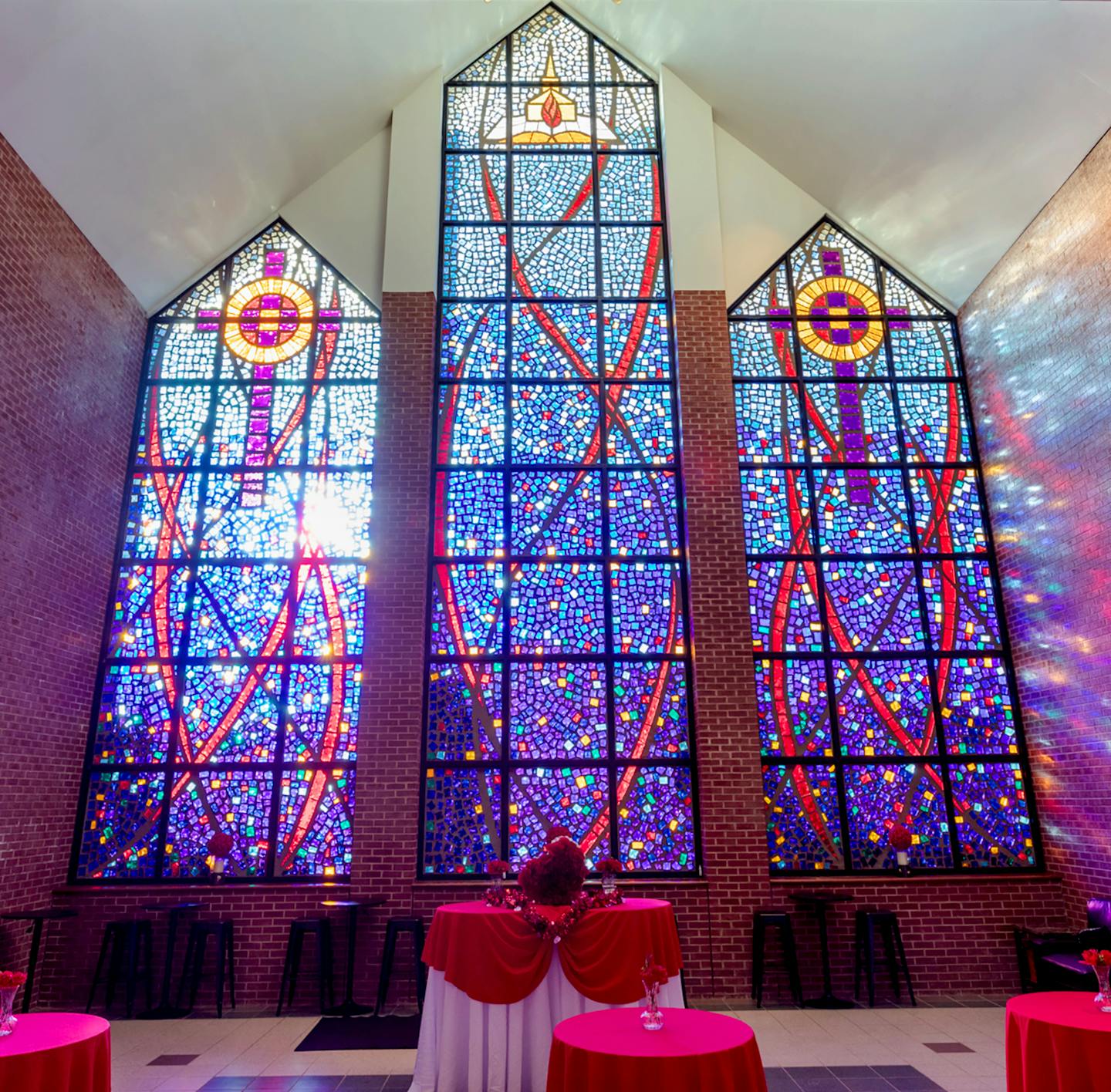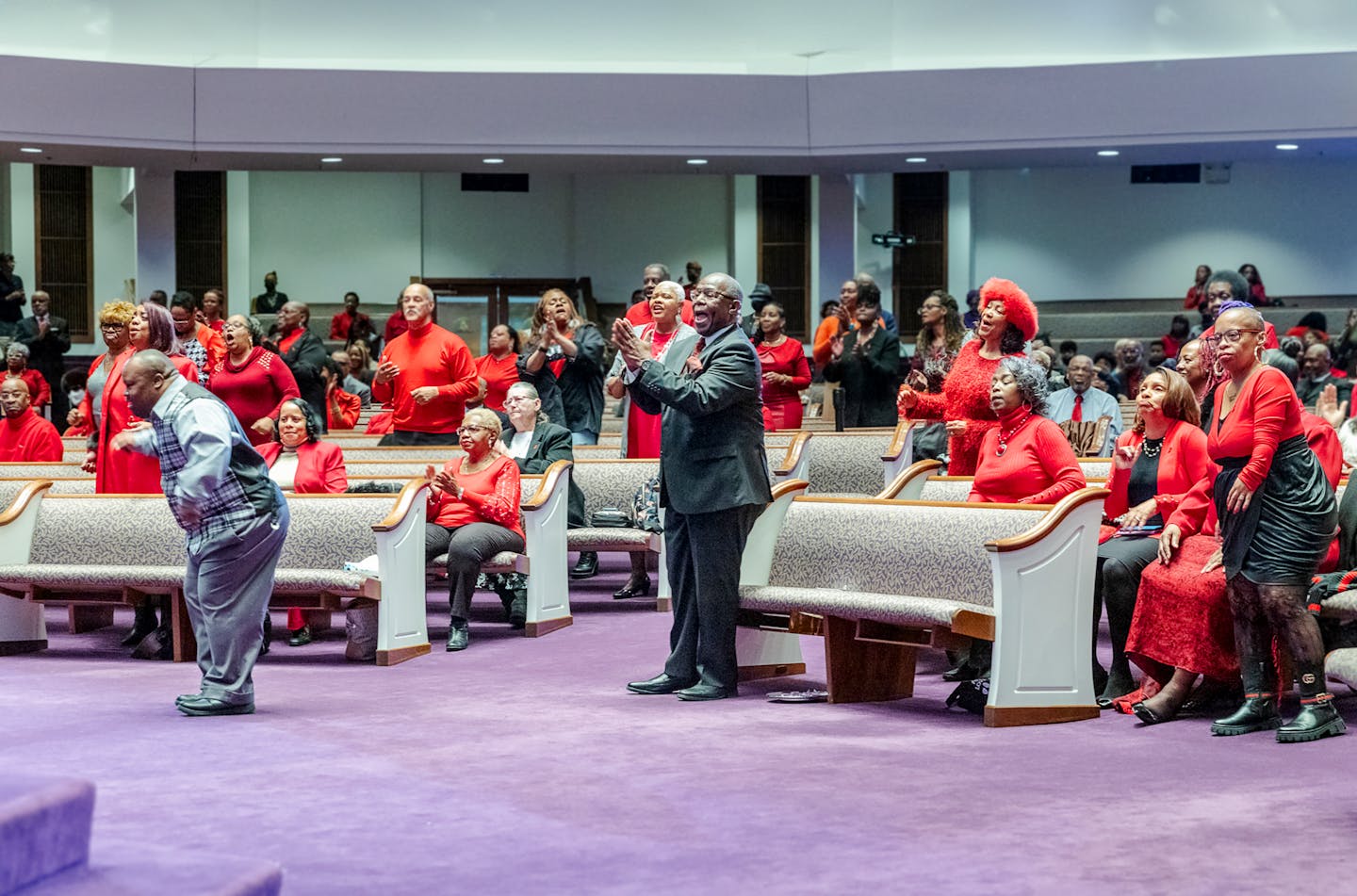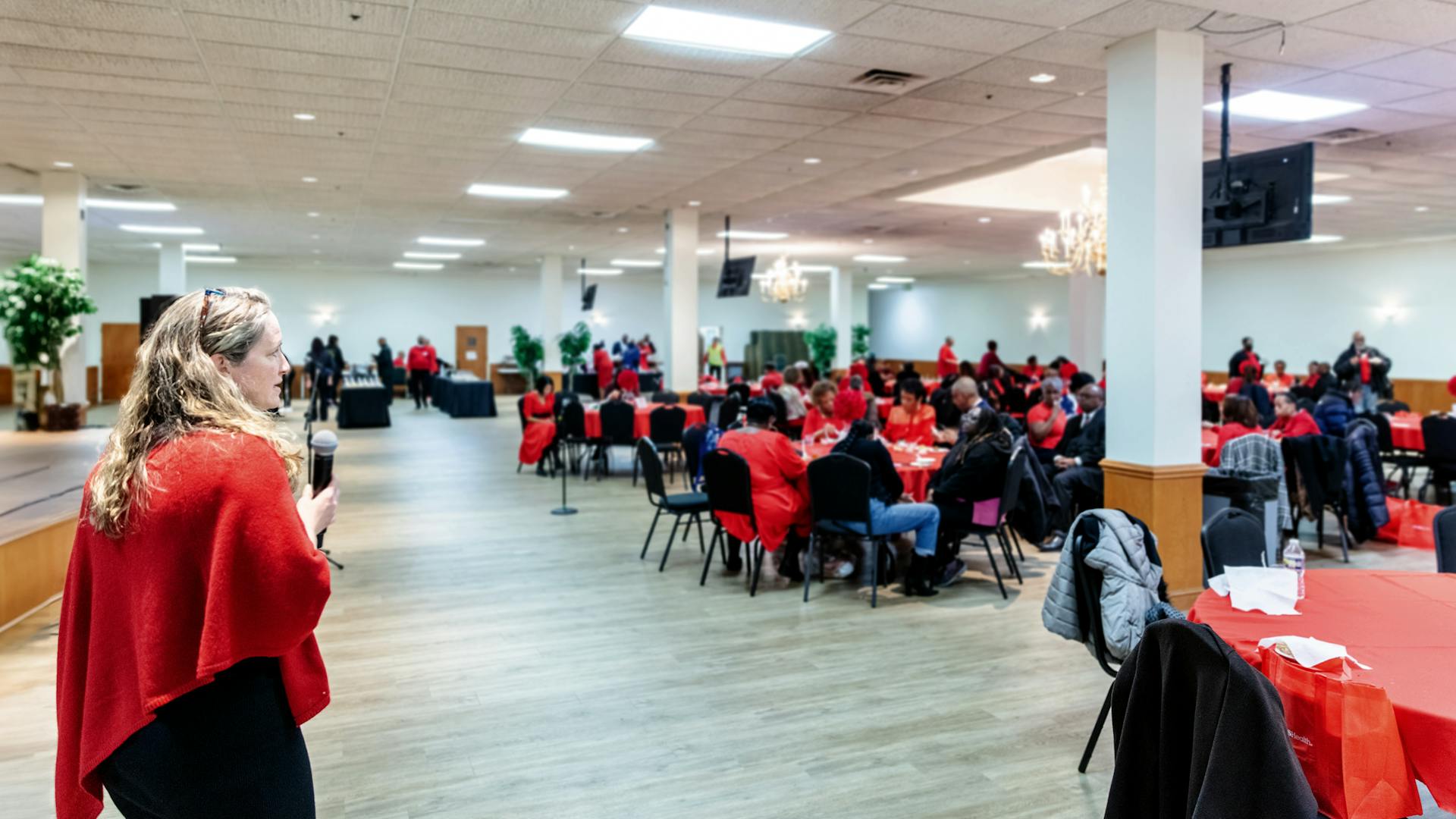Live. Magazine



Entering the circle-shaped nave of Mount Pleasant Church in Baltimore was like taking an energizing bath. The sounds from the choir, the colorful light emanating from the stained-glass windows, and the cheerful friendliness of the hundreds of congregants immediately lifted my spirits.
Overwhelmed with the first impression, I took a seat on the balcony to better discern the scene: The Service was not in full swing yet. Below, people were talking to each other, and children were running around.
On the stage, in front of the altar, a group of young gospel singers were performing a song. In the pews, some were singing, others humming and dancing, others again sat there, like me, cherishing the moment, which contrasted sharply with the dry winter landscape with its leafless trees, the brown lawns, and grayish buildings that were met by a chilly wind scattering the sunny rays.
Soon, Service would begin, and the congregation would intone We Shall Overcome, electrifying the air with a sense of joy and optimism, which I realized was necessary to overcome the crisis that reigned outside Mount Pleasant.
A joyful red alert
On the Sunday of my visit, February 4, 2024, the experience was extraordinary for another reason: All the women wore beautiful red dresses, while most of the men had knotted a crimson tie around their neck, giving the room an added joyfulness.
Young and old enjoyed the National Wear Red Day.
With their shiny monochrome look, the congregants were honoring the National Wear Red Day that is celebrated at the start of February, when America’s medical community focuses on heart health to raise awareness of one of the biggest healthcare challenges in the United States and elsewhere.

Heart health dwarfs most healthcare problems in terms of scope and financial burden. Worldwide, more than 500 million people are affected by heart disease, which kills 18 million people every year. In the United States, according to the Centers for Disease Control and Prevention, the number stands at round 700000, meaning that every half minute or so a person dies of a heart disease in the country. The annual costs are staggering too: 216 billion US dollars, plus 147 billion dollars in productivity losses.
The reasons for this are manifold: societal aging, sedentary lifestyles, unhealthy foods, and lack of access to drugs and healthcare services.
Getting to the heart of the problem
The situation for African Americans looks even worse with mortality rates some 20 percent higher than in other race groups. For a long time, the medical community believed that genetics was a key driver behind this discrepancy. But researchers such as David A. Ansell from Rush University Medical Center and others showed that the health gap was driven mainly by social factors: barriers to access that keep millions of people away from the country’s most advanced healthcare services. In simple terms: Poverty and race lines keep African Americans away from essential healthcare services, contributing to the gap in mortality rates between race groups.

In breast cancer, for example, a study published in the International Journal of Environmental Research and Public Health found that, since 1990, mortality rates have decreased significantly for white women without a similar decrease in Black women, resulting in a 41 percent higher mortality rate in Black women than in white women between 2015 and 2019.
A similar picture emerges in the cardio space. While mortality rates have fallen for both Black and white adults between 1999 and 2019, around 426 African Americans out of 100000 die every year due to heart disease compared with 326 white Americans out of 100000, according to a study published in Circulation.
“The continuing gap in cardiovascular mortality between Black and white adults has likely been driven by systemic inequities and structural racism,” said senior study author Rishi Wadhera. “Black adults disproportionately experience social, economic, and environmental barriers to achieving optimal health. At the policy level, more initiatives are needed to directly address the systemic inequities that perpetuate poor cardiovascular outcomes among Black adults.”
A social way out
While there are genetic differences that also contribute to health disparities, structural barriers emerging from racist bias are increasingly being identified as the key driver. But while many efforts have been undertaken to improve access to healthcare for African Americans through grassroots and state-sponsored programs, one potential player has long been overlooked by the healthcare community: the Black Church.

But this changed during the coronavirus pandemic, when the Black Church and its massive social influence was instrumental in providing access to vaccines and healthcare education to its congregants across the country, helping to substantially reduce mortality rates for the Black community, which were at record high levels during the early phase of the outbreak.
Leveraging this social network, the US-based think tank Global Coalition on Aging has set up the program Engage with Heart in Baltimore that brings together local churches, community centers and other players to improve heart health in the city. The program, which is sponsored by Novartis, also includes the Baltimore City Health Department, the Black Church Food Security Network and the Johns Hopkins School of Nursing, which provides heart health monitoring services.
Among the four Black Churches that are part of the program is Mount Pleasant, one of the city’s largest with the highest number of congregants. Founded in 1930, the church, which today is led by Senior Pastor Clifford Johnson, has gone through many challenging phases, but has also learnt to weather the storms by creating strong outreach programs to help its community.
This has made it an ideal partner for Engage with Heart, which leverages the power and trust network built by the church to inform people about how to avoid heart disease by doing regular check-ups, sticking to a healthy diet and considering sport as part of one’s daily habits.
We Shall Overcome
Some 10 minutes after I took my seat on the balcony of Mount Pleasant, the Service begins. The two pastors take to the stage but are not preaching from the Bible. Instead, they start talking about heart health.
Besides informing the community about the dangers of heart disease and the special vulnerability of African Americans – most prominently in Baltimore, where more than 25 percent of all deaths are due to heart disease – they also talk about Engage with Heart and the opportunity for congregants to check their heart after the Service.
The singsong of their voices, their idiosyncratic intonations and their movements on stage give the words a new meaning. As they inform the congregants about mortality rates and other medical facts and figures, they remain in high spirts when others would fall into a somber and serious tone. They convey the positive side of things: You can change things now.
And as the church choir starts to sing the gospel We Shall Overcome and the congregants chime in, I stand up and listen to the song, feeling that what I am experiencing could be the dawn of something new that holds the potential to fix one part of America’s healthcare sector.

Cholesterol and kale
Two hours later, the Service comes to an end. Many congregants remain in their pews, talking to their neighbors and waving hellos and goodbyes to others, while I walk to another part of the church to talk to the nurses from the Johns Hopkins School of Nursing, who are preparing the gear for the health check-ups that are offered as part of Engage with Heart.
One of the volunteers is Faith Metlock, who moved to Baltimore for her Ph.D. “I knew I always wanted to be in the community,” she says. “I wanted to get my Ph.D. so that I could design studies and trials that were community-based and really help to meet the needs of vulnerable populations that would truly benefit from these services.”
Volunteers from the Johns Hopkins School of Nursing during health check-ups at the Mount Pleasant Church in Baltimore.
In Baltimore, Faith Metlock also actively sought out ways to get involved with the community. And one of those projects included being a part of Engage with Heart. “It really appealed to me that we were partnering with churches in the community, and designing a program with the people, something that was sustainable, something that they had their input on and that really addressed their identified needs.”
As the first congregants arrive after Service, she invites them to the tables, where the volunteers stand ready to do cholesterol and blood pressure monitoring, among other things. Besides the health check-ups, Faith Metlock and her colleagues also ask the congregants general heart health questions and whether they are already on some heart treatments.
One of the congregants is Brenda Pryor, a 78-year-old woman from Baltimore. While she has her heart regularly checked, the opportunity to do this at the church is a great plus, she says. Likewise, Stephanie Watkins, a 62-year-old pensioner from the county, is embracing the offer, as is Leslie Cash, a 68-year-old former teacher from the city. “I don’t do sports at my age, and I like to eat well, so having my heart checked is important,” she says with a big smile in a daredevil way.
The majority using the service are elderly women, many of them with a history of heart disease such as hypertension, elevated cholesterol levels, and diabetes. Men also come to the health check-ups, but not as frequently. “This is certainly one of the challenges we have,” says Faith Metlock. “But, as we deepen our outreach, we hope to also involve men more often.”
Community Health Ambassador Terri Shannon also took the opportunity to get a health check-up.
Faith Metlock and her colleagues take time for each congregant, asking them questions from a specially designed questionnaire that respects their privacy but allows enough information to be gathered to form a robust medical picture that can help a doctor do further testing if needed.
During these interactions, which are peppered with laughter and jokes as the morning wears on into late afternoon, the nurses also point to the food stands that have been set up in the hall next door by the organizers of the National Wear Red Day and Engage with Heart. Besides offering healthy snacks as an alternative to the fast-food heavy diet, which has become staple across the United States, a nutritionist is also talking about ways to reduce fast-food consumption.
Healthy and tasteful food was served after Service to inspire congregants to test new recipes at home.
But although the food, which includes kale and chicken salads as well as a fruit desert, is delicious, many congregants have a hard time changing their diet, for personal but also for economic reasons. “I live alone and usually get ready meals,” says Stephanie Watkins as one of the volunteers explains the health data to her, which shows higher levels of cholesterol. “But the chicken salad was great, so I could try this at home.”
In for the long game
Faith Metlock and her colleagues know that their community outreach effort is not a quick fix. Things will not change overnight. But they are in for the long game and the team is sure to overcome the challenges they are facing today. All of them are highly motivated, especially after the event at Mount Pleasant, which attracted some 50 congregants to do the check-up.

Mandy Sandkuhler from Mended Hearts takes the opportunity to talk to the Mount Pleasant congregation to inform them about the importance of changing food habits.
She is convinced that because of the strong influence of industrial food players, the only way to adopt healthy eating habits is by taking grassroots action.
“We hope that, by coming to the communities that people frequent, being accessible, and providing them with this free resource, we can help empower individuals to take a more proactive approach to their health,” she says. “Trying to catch people before they face anguish or future health problems is really what we hope these events can do for individuals.”
For African Americans, but especially African American women, every such step counts as they are even more exposed to heart health risks than their male counterparts or white women. According to the American Heart Association, 49 percent of African American women aged 20 or older are affected by heart disease and they face almost twice the risk of stroke compared to Caucasian individuals.
This is the reality outside Mount Pleasant, a reality that for a short moment disappeared amidst the joy and optimism of the Service and the work done by the volunteers from the Johns Hopkins School of Nursing and all the partners behind Engage with Heart. Together with the congregants, the pastors and the energizing songs of the gospel singers, they are raising their voice against heart disease – the deadliest and most silent killer in the United States and the rest of the world.






